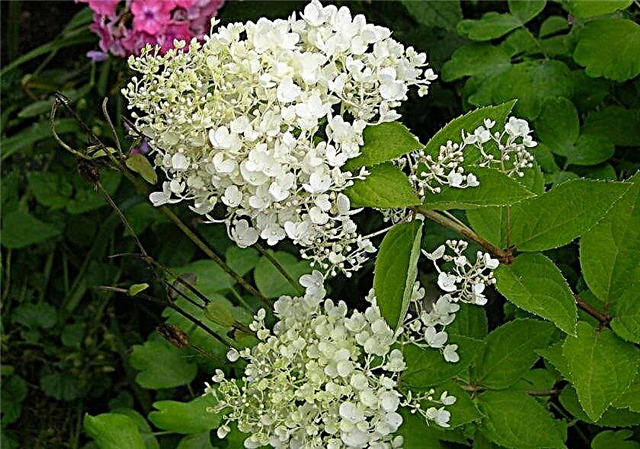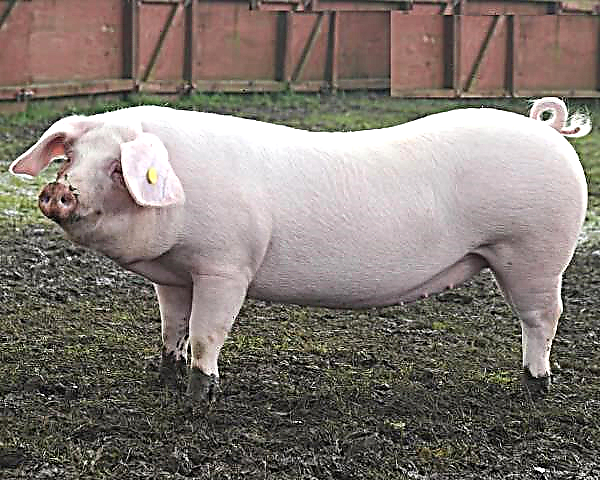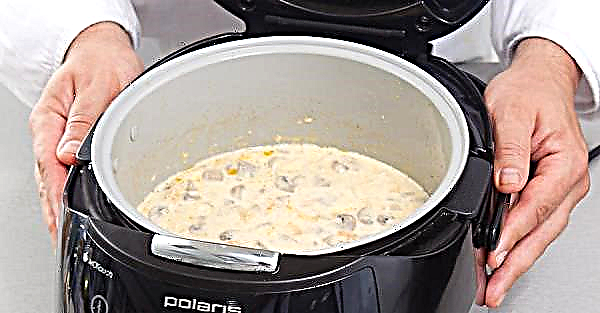A decorative culture with lush flowering hydrangea with proper care feels good both in the southern regions and in areas with more severe weather conditions. Its cultivation in the Urals in open ground has its own specific characteristics precisely because of the severity of the climate. But if the culture for planting is chosen correctly and the basic recommendations for its cultivation are followed, then the flower will delight the gardener with its beauty for more than one year.
The best winter-hardy varieties of hydrangeas for planting in the Urals
Varietal variety has many faces, but not every hydrangea is able to winter hardy. In the Urals, the temperature in winter often drops to -40 ° C. Such a climate is threatening for most of the species of this culture: oak-leaved, petiolate, large-leaved. If, nevertheless, the choice falls precisely on these representatives, then we must remember that without good shelter or transplanting in the fall to greenhouse or home conditions in the harsh Ural realities, they will not be able to winter.
It is not easy to choose seed for growing in such climatic conditions, because you need to take into account not only the external data of the variety representatives, but also the minimum temperature conditions that the plant can tolerate.

Panicled, tree-like and mottled shrubs are considered the most winter-hardy. They are able to survive in 40-degree frosts.
Recently winter-hardy hybrids of large-leaved hydrangea, which was considered unsuitable for growing at very low temperatures, were bred. The names of these varieties are:
- Endless Summer;
- Early Sensation (Airlie Sensation);
- You and Me Together (U & Mi Tughese).

These varieties can not only be grown in the Ural territories, but they also have another qualitative feature - inflorescences appear on both last year's and very young shoots, which greatly simplifies autumn pruning of plants.
Did you know? Almost 95% of the cut hydrangeas intended for sale are grown in the Netherlands. More than forty million stems are bought at Dutch auctions a year.
Among the variegated varieties, the Bretschneider hydrangea, which withstands very low temperature conditions, is most suitable for the Ural climate. Representatives of this variety are relatively high, grow up to 3 m.
To frost-resistant varieties of panicled hydrangea include:
- Vanilla Fraisegrowing to 1.5-2 m shrub, has a diverse range of flowering from white to raspberry color. It blooms from July to mid-September. It can be grown calmly in 29-degree frosts, it can tolerate a drop in temperature to -40 ° C. If it freezes, it can recover.

- Dart’s Little Dot - A variety whose plants can grow as little as 80 cm. It blooms from July to early September. It tolerates the same temperature conditions as Vanilla Frize.

- Kyushu - a variety of relatively tall 3-meter plants whose crown shape resembles a fan. The bark of the branches is characterized by the presence of a reddish admixture of a brown shade. It blooms with white inflorescences from late July to mid-October. Winter hardiness up to -25 ° С.

- Lime light or Lemon Light (Limelight ’) - a variety of plants growing up to 2.5 m and initially having white inflorescences with a creamy, yellow and green hues, and finally pinkish ones. The flowering period is from July to the end of September. It has a high level of frost resistance up to -29 ° С.

- Little Lime - a variety characterized by a height of up to 0.7 m, with a light green pistachio blossom in the initial stages and pinkish at the end of the flowering period. High winter hardiness up to -34 ° С.

- Unique (Unique) - a variety with a height and width of plants no more than 2 m 50 cm. Blossoms in white or pink inflorescences from July to mid-September. The minimum temperature of cultivation is -34 ° C.

The most frost-resistant and unpretentious are varieties of a tree-like species:
- Annabelle: grows to 1.5 m, has a white or pinkish color. Inflorescences of a magnificent hat-shaped form. Flowering occurs from June to mid-autumn. One of the most frost-resistant varieties that tolerate temperatures of -35 ° C.

- Bella Anna: growth up to 1.3 m, with pink or almost raspberry inflorescences. It begins to bloom from July until the start of frost, tolerates temperatures up to -34 ° C.

- White House: bushes in height about 1 m, flowering white with a creamy tint, begins in late June and lasts until mid-September. Frost resistance at a minimum temperature of -35 ° C.

- Hayes Starburst: height of plants up to 150 cm, spreading of the crown and profusion of terry white inflorescences with green or creamy tint are characteristic. It is covered with flowers from July to the end of September. It shows frost resistance up to -34 ° С.

- Bounty: height up to 1 m, the bushes are compact, spherical inflorescences are white with a pistachio or milky hue. It blooms from July to the end of September. It exhibits high frost resistance up to -30 ° C.

- Incrediball: height up to 1.3 m, flowering white with a yellowish and greenish tint. Period of flowering from July to the end of September Tolerates temperatures up to -29 ° С.

- Invincibelle Spirit: the bushes grow to a height of 1.8 m. Beautiful inflorescences have a pinkish color from dark pink to bright pink, appear from July to early October. The variety is characterized by the highest level of frost resistance -37 ° C.

Which is better to plant in the Urals
In the Urals, you can plant all of the above types of hydrangea. Each of them shows the ability to survive in low temperatures. But tree-like and paniculate are characterized by maximum frost resistance. Most varieties of these hydrangeas are able to tolerate temperatures up to -40 ° C, which should be the determining factor when choosing a culture for growing in the Urals.
It is best to purchase planting material obtained in the area where they plan to plant it, and not bring it from other regions.
Important! Hydrangea is a natural indicator of soil acidity and alkalinity. The color of its inflorescences varies depending on the level of these indicators: high acidity - blue flowers, neutral soil - white, high alkalinity - lilac-pink.
When to plant
Hydrangea can be planted both in spring and in autumn.. Spring landing is better for the Urals. You need to do it earlier - immediately after the end of the frost. In this case, the plant can take root well. With the advent of autumn, you can also plant a crop, but then a young plant should be qualitatively insulated. Experienced flower growers still recommend this procedure to be transferred to next spring.
Video: How garden hydrangea is grown in the Urals
Landing rules
The territory of the Urals is heterogeneous in nature. There is a difference in soil, humidity, type of terrain, temperature conditions, weather conditions. All these factors should be taken into account when planting hydrangeas in one or another Ural region. Along with this, there are universal general rules for planting, compliance with which will help even inexperienced gardeners to get the expected result.
Did you know? Hydrangea should not be eaten, as it is a poisonous plant containing cyanogenic substances.
Seat selection
One of the main factors that can have a big impact on the survival rate and further development of seedlings is the choice of place for planting. The site should be adequately lit or slightly darkened.
Since hydrangeas do not like windy weather, very open places are not suitable for their cultivation. Ideally protected from wind gusts and scorching sunlight, the area near the fence or house.

When choosing a place for planting hydrangeas, you need to remember that the bushes can grow up to 3 meters in diameter. therefore the plot should be spacious.
Pit and soil preparation
The soil for planting hydrangea should not be heavy. The best option is its weak acidity.. Fertile and peat-rich soil is what you need for this crop.
Important! In highly oxidized soils, hydrangea will disappear.
Pits for planting seedlings should be placed at a distance of not less than 1.5 m, when planting one plant instance, the distance to other crops is 2.5 m. The optimal dimensions of the recess should be: 0.5 m in depth and from 0.5 to 0.8 m in width.
 If you want to get a live fence, the pits can be replaced by a continuous trench
If you want to get a live fence, the pits can be replaced by a continuous trench
Wells are recommended to be formed just before landing, after which:
- pour 30 l of water into each of them, leave overnight to allow the liquid to absorb;
- pour to the bottom a mixture of peat, fertile soil, sand, humus in a ratio of 2: 2: 1: 1, it will not be superfluous to pour a few pine needles;
- add mineral dressing, consisting of 65 g of superphosphate fertilizers, 30 g of potassium sulphide, 25 g of urea;
- place the seedling in the hole, spread the roots, cover with earth, preventing the root neck from falling asleep;
- water the seedling plentifully;
- Mulch the ground around the plant with crushed bark, pine needles, peat moss.
If the culture is planted in regions with heavy rainfall, then it will not hinder to lay a drainage layer of expanded clay on the very bottom of the hole, brick battle, pebbles 10 cm thick.
Important! Despite the fact that hydrangeas bloom in natural conditions for a long time, as soon as they are cut, they immediately wither. Helping to prolong flowering can put them in boiling water for half a minute, after which the bouquet is put in a vase.
After landing care
Hydrangea is a plant for the care of which there are time-tested recommendations. The principles of the content of this crop almost do not differ from the standards of cultivation in open soil of other shrubs. But still there are some features, especially when growing hydrangea in the Urals.
Watering
In dry periods, seedlings need to be regularly watered, in regions with high levels of humidity, this procedure is carried out as the soil dries. The first time after planting, hydration should be carried out both in the evening and in the morning.

Twice during the summer period, it is recommended to water the seedlings with an acidic solution prepared from 5 l of water and the juice of one lemon. The water used must be soft, have room temperature and be previously settled.
Important! Mulching plays an important role in retaining moisture and the ability to save energy on irrigation. In addition, this procedure often becomes an effective substitute for loosening and removing weeds.
Fertilizer
It is recommended to feed hydrangea 3 times per season:
- in the spring;
- with the onset of summer;
- during flowering.
Complex fertilizers consisting of urea, superphosphate components, potassium nitrate in equal proportions, which are mixed with water in a proportion of 1:10, are suitable for such top dressing. At the end of summer or at the beginning of autumn, you can carry out the fourth feeding and fertilize each seedling of 15 g of compost.

Pruning
When growing hydrangeas, be sure to remember about pruning.
Did you know? In nature, there are about 80 main types of hydrangeas, on the basis of which more than 1,200 hybrids have been developed for cultivation in a wide variety of climatic conditions.
It is recommended to carry out this procedure both in spring and summer:
- Spring - provides for the removal of branches with damage and signs of freezing, as well as diseased and weakened. All of them negatively affect the growth of the bush. One-year-old seedlings should be shortened to four buds.
- Autumn - consists in removing dry inflorescences and dried branches 1/3 of the length.
- Anti-aging - With age, all branches except a few of the strongest and most developed ones are removed from the plant.
 If the bush is not cut, then over time it will become impassable, the growth of culture will stop and flowering will transfer
If the bush is not cut, then over time it will become impassable, the growth of culture will stop and flowering will transfer
Shelter for the winter
Even hydrangea species, characterized by a high level of frost resistance, will not be superfluous to shelter for the winter in the conditions of the harsh Ural climate.
Shelter is carried out in several ways:
- The area near the bush is sprinkled with peat up to 20 cm thick, the layer is covered with slate or film. The stems are wrapped with material for shelter, the branches are bent to the surface of the earth and fixed. They should be filled with sawdust or covered with spruce branches.
- A shelter frame is being built, which should be 15 cm high and 25 cm apart from the previously tightened crown of the bush. Fallen leaves, sawdust are placed in the frame space, it is covered with roofing material or plastic film on top of it.

An excellent insulation is a snowdrift of freshly snowed snow poured on an early bent plant. He is able to additionally protect the bush from frost.
Diseases and Pests
Hydrangea shows good resistance to diseases, but still there are threats in the form of:
- powdery mildew - brownish-yellowish spots on the leaves and gray or lilac plaque;
- downy mildew, manifested in the form of darkening oily spots on the bark of the plant;
- white rot, in which the leaves darken, rot and become covered with white coating;
- gray rotcharacterized by the appearance of watery spots with time covering, reminiscent of cotton wool, a grayish coating;
- chlorosisarising from a lack of iron or excessive liming - the leaves first noticeably brighten, then turn yellow.
With all these problems, spraying the plant with copper chloroxide, Falcon, Topaz and others fungicides will help. Processing should be carried out according to the instructions. With chlorosis, you can overcome the problem even with a solution of potassium nitrate or iron sulfate, 40 g of which must be diluted in 10 liters of water
Pests pose a danger to the culture:
- aphid;
- spider mite;
- snails.

To destroy the first two pests from the list will help insecticides ("Entocide", "Actara" and others).
Emerging snails are able to nibble all the buds and leaves. They must be collected manually, and you can also use poison, which is used according to the instructions drugs "Ulicide", "Bioslimaks" and others. In order to notice the diseases and pests that appeared in time and take appropriate measures, it is necessary to inspect plants with systematic regularity.
Important! The lack of growth and the absence of abundant flowering during the cultivation of hydrangeas are miscalculations in the care, primarily due to improper soil composition and improper watering.
Subject to the basic recommendations for care and the creation of the necessary living conditions, hydrangea can grow even in the Urals. A variety of varieties of this garden beauty, able to withstand the climate of the region, allows you to create a real oasis on the Ural lands. The main thing is to make the right choice.

























